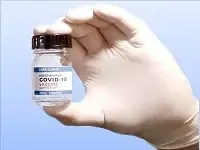Vaccination
If you're
wondering, what has immunology done for me? Well, the answer is very simple -
there is vaccination; a Really easy way to protect us all from contagious
disease.
Vaccination provides protection by using
pre-existing components of the immune response or, more commonly, by inducing
the proliferation of antigen-specific memory cells. We can divide immunizations
into active or passive immunizations.
The most
common form is active immunization where the antigen is applied. This often
requires additional ingredients. For example, an assistant. The immune response
occurs in vivo.
It takes
time to develop, but it does provide long-term protection because vaccination
produces memory T cells and memory B cells. The cell has the ability to
generate both moderate and humorous responses.
In contrast, inactivated immunization is the
injection of pre-existing antibodies. It provides immediate protection, but protection
is short-lived. The half-life of antibody circulation is about three weeks.
Therefore,
the protection provided by these injected antibodies does not last long. It
only provides humorous exceptions. The pathogen needs to be sensitive to the
destruction of antibody mediation.
Inactive immunizations will not help if
cytotoxic T cells are needed. And there is the risk of transition. Let's take a
look at some examples of passive immunization.
Horse
anticoagulants, botulism toxin, and diphtheria toxin against snake venom can be
given to people exposed to these toxic agents. Polyhumanized monoclonal
antibodies against hepatitis A or B, measles, rabies, tetanus, varicella-zoster, and humanized monoclonal antibodies against hepatitis A or B may be
given to all patients exposed to these agents.
With regard
to active immunizations, vaccines can neutralize antibodies. In order for the
virus to infect cells, the virus needs to attach to receptors at the cell
level.
Antibodies
can prevent the virus from attaching to receptors on its cell surface. Bacteria
can cause toxins. They can poison our cells. Antibodies can inhibit the toxic
activity of bacterial toxins.
Finally, in order for an infection to form,
many microorganisms need to colonize the body's surface. Antibodies, especially
dimeric secretory IgA, can inhibit colonization.
Active vaccination:
Let's take a
look at the immune system of active vaccination. Here we have a sketch showing
you the intensity of the immune response after the first encounter with the
antigens of rosin. It will be a natural infection that we will face.
The underlying immune response is very weak
and short-lived. However, if instead of experiencing a natural infection, which
is potentially pathogenic. So we give a modified version of Rogozin. In other
words, antigens are seen in the non-pathogenic form.
Then we extract this basic immune response.
And more importantly, memory T cells and B cells are formed. Given the
secondary immune response, if later encountered with the original pathogen.
Therefore, the individual develops a simple secondary immune response because
the primary immune response comes from a non-pathogenic form.
And now there is a secondary immune response
that is strong and lasting. And this is in response to the original pathogen in
the first encounter. Therefore, as a result of vaccination, memory cells are
already present. Therefore, there is a secondary immune response to the first
encounter with Rogozin.
This is for your information only. I'm not
going to read through it. You can read it at your leisure. But it does give you
a current schedule of vaccinations for the USA.


Post a Comment